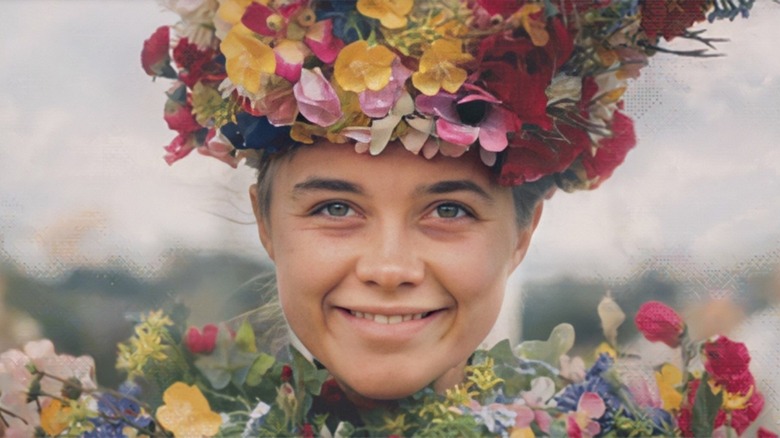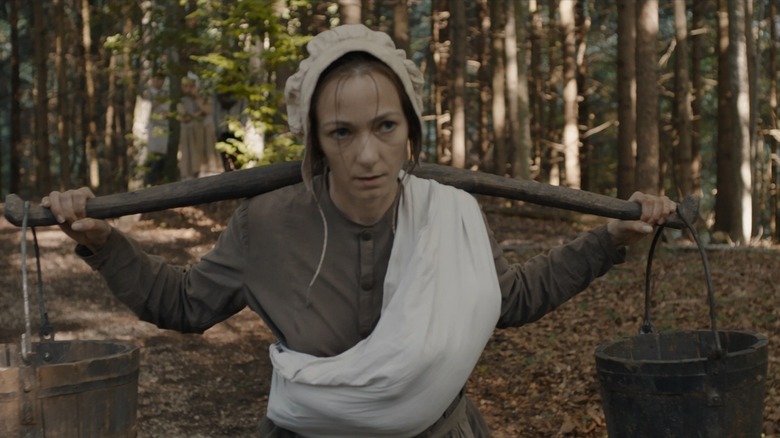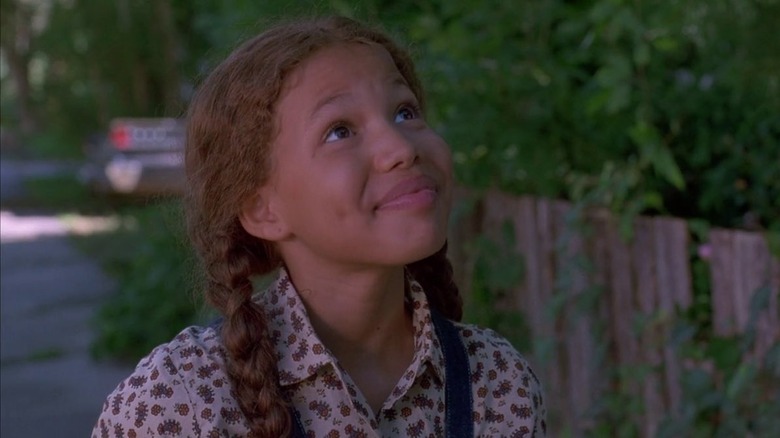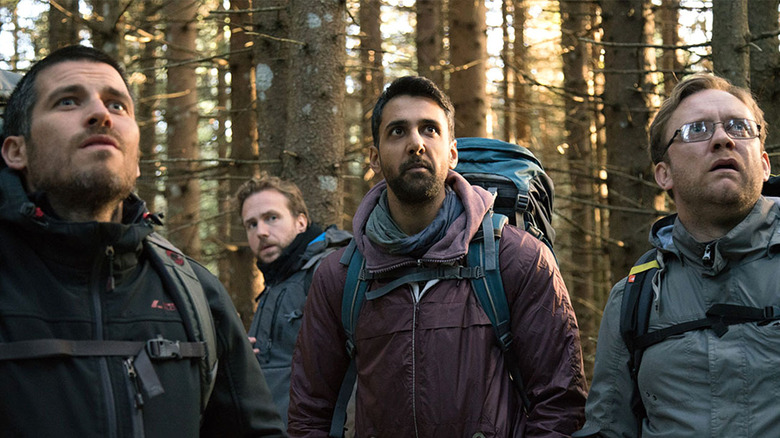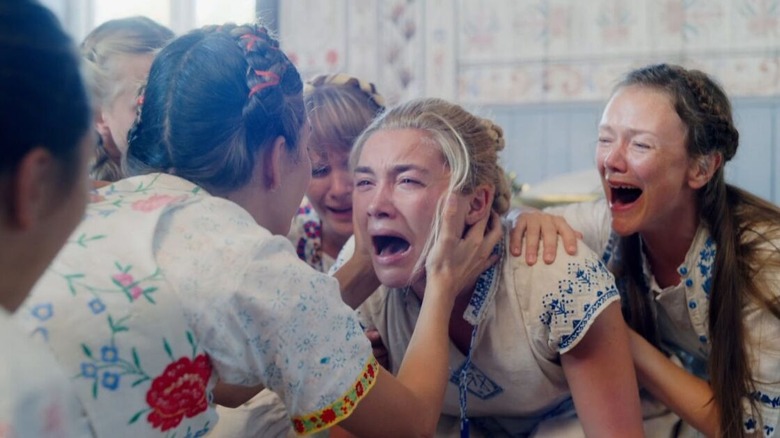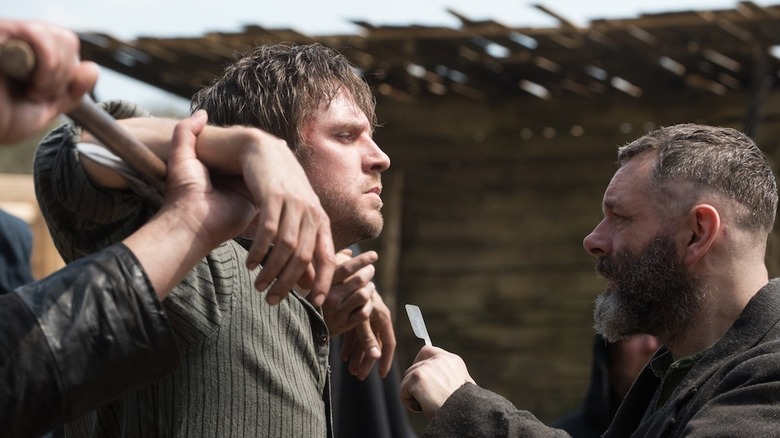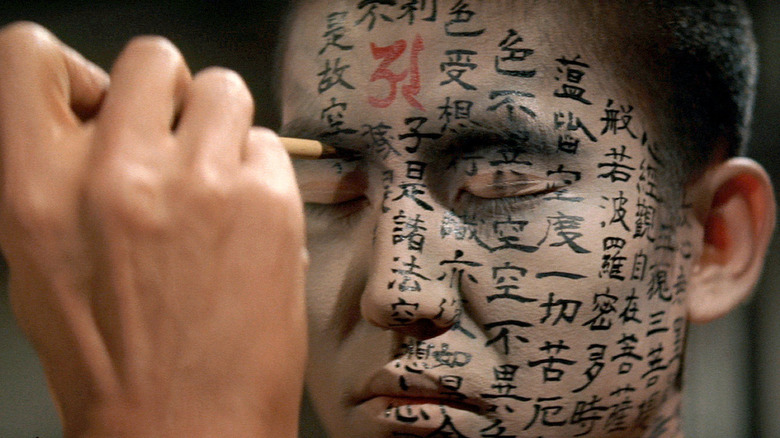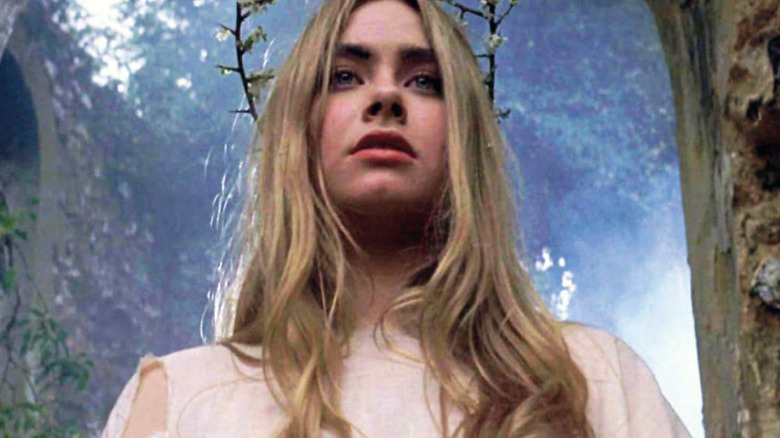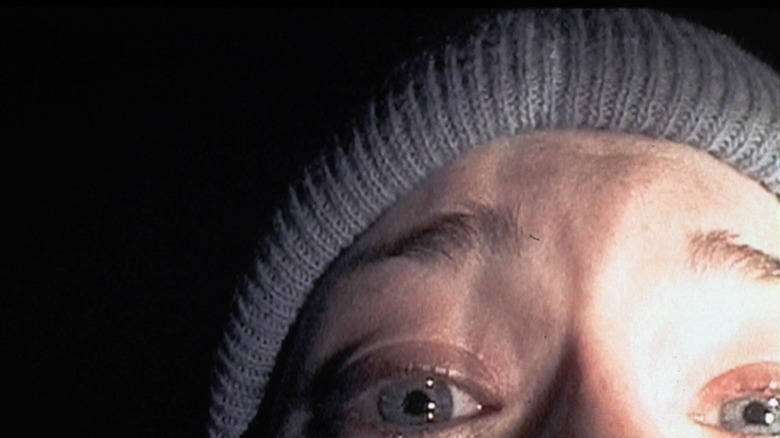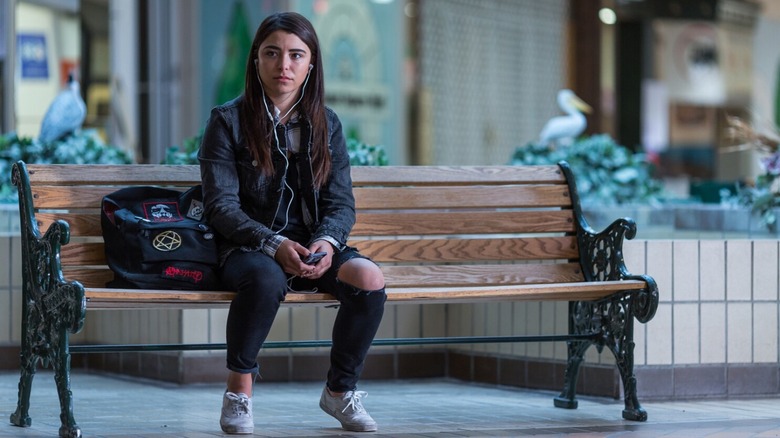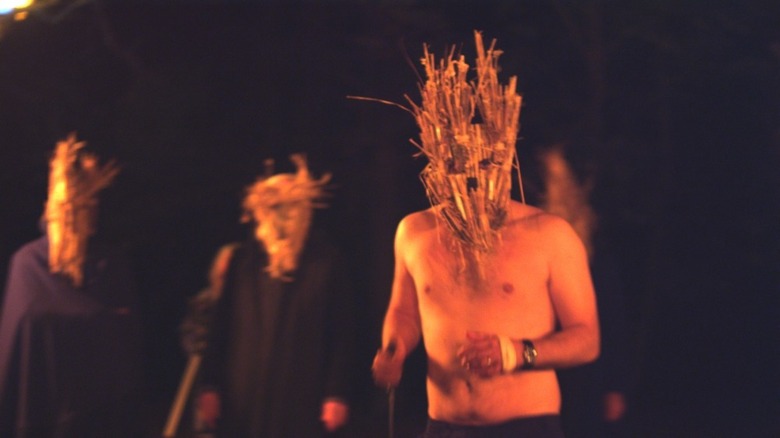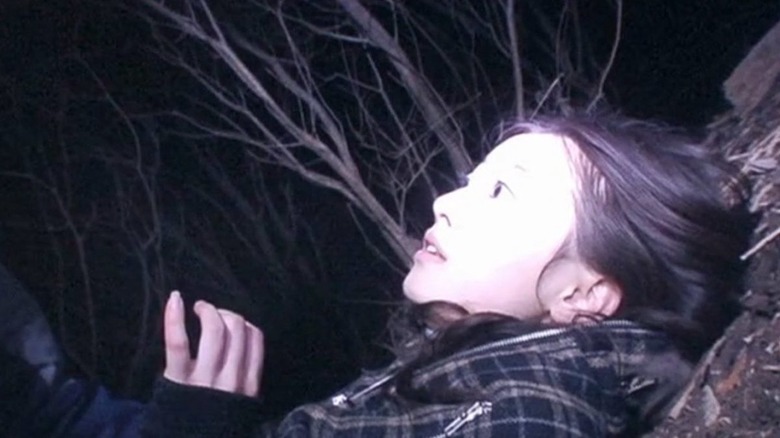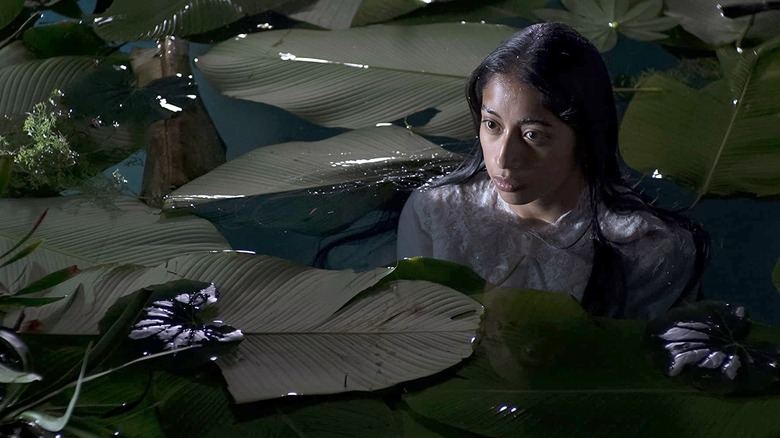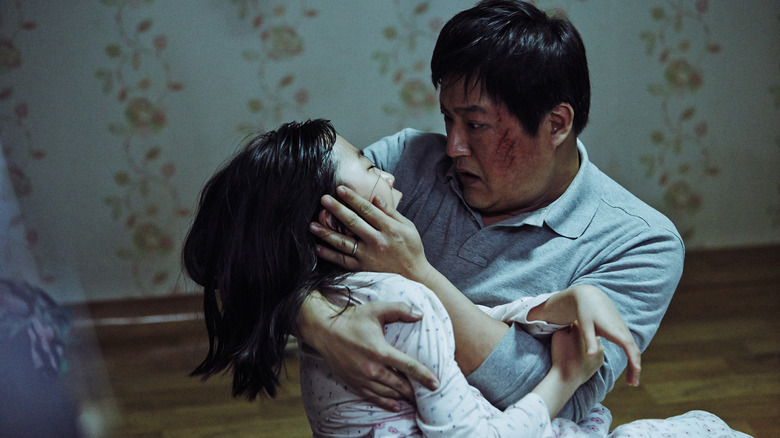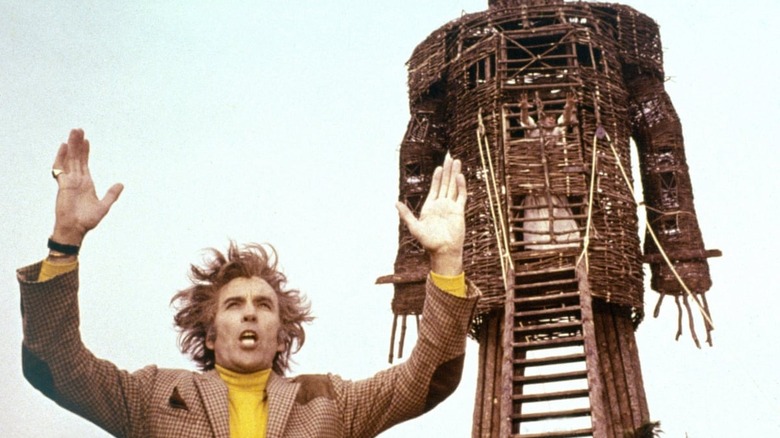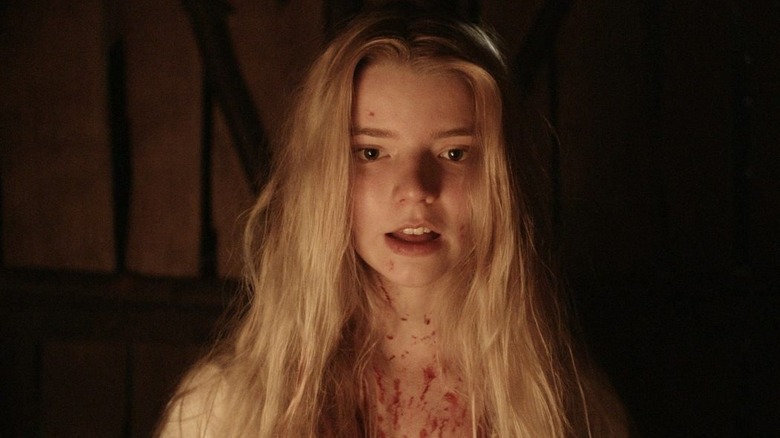The 15 Best Folk Horror Movies Ranked
For as long as human beings have walled themselves up in cities and kept warm by the light of the fire, the forest has been associated with the unknown, the mysterious, and that which is older, stronger, and more powerful than human beings. This is clear from Little Red Riding Hood encountering a wolf on the path to Grandmother's house to the hundreds of people who go missing in United States parks each year. When the darkness of the trees closes in and the sounds of wildlife drown out human noise, we're reminded that we haven't climbed as far up the food chain as we'd like to think. Enter folk horror, a subgenre that explores the terror of the lush, green landscape, the mountainside, the wild and primal places unmarred by the creep of civilization.
Shudder recently released "Woodlands Dark and Days Bewitched: A History of Folk Horror," a documentary that chronicles the subgenre and how it has changed over the years. These are the general elements, the flowers that are often growing in the twisted garden of folk horror films: Isolation, rural landscapes, cults, secret rites, local myths/legends, and the brutality of nature coming face to face with humanity. So join hands and dance around the May Pole, ignoring that creeping sense of doom as we celebrate 15 of the best folk horror films out there.
15. Hagazussa (2017)
"Hagazussa: A Heathen's Curse" is a German film by Lukas Feigelfeld that feels less like a movie and more like flipping through a collection of vicious fairytales by the light of a flickering candle. We're talking about fairytales way back before Disney cleaned them up, from a time when they were all cannibalism, sexual violence, and children torn to pieces for refusing to heed the advice of their elders. That's the brush with which "Hagazussa" paints its stark portrait of a woman's life in the 15th century Alps.
The film is split up into four acts, titled "Shadows," "Horn," "Blood," and "Fire." It is the story of Albrun, a goatherd cast out by her community and maligned by the townspeople. According to the filmmaker, he wanted to craft a film that would take a look inside the troubled mind of a woman that might have been seen as a witch, dissecting the intersection of traumatic mental illness and fanatical superstition. The result is introspective, tragic, and often stomach-churning to watch.
14. Eve's Bayou (1997)
Some of you reading might disagree with including Kasi Lemmons's acclaimed directorial debut on this list, categorizing it more as southern gothic than folk horror. Not only can a movie fall in the middle of that Venn diagram with ease, but this atmospheric film about secrets, lies, and voodoo in Louisiana is the kind of folk horror the subgenre needs a lot more of.
"Eve's Bayou" tells the story of Eve Batiste, a young girl navigating a strained relationship with her family during the summer of 1962. Eve lives in a big, beautiful mansion surrounded by unforgiving swampland with her mother, father, sister, and Aunt Mozelle, the latter a troubled woman blessed with the gift of fortune-telling. "Eve's Bayou" is beauty and danger all at once, the elegance of the Batiste home contrasted against the threat of what lurks in the swamp beyond it, and what might be brewing beneath the surface of the family itself. Buoyed by stirring performances and a floaty, dreamlike quality that evokes the feeling of sifting through memories, it's a completely unique film that invites you to watch it again and again.
13. The Ritual (2017)
Four friends hiking together in the remote wilderness of Sweden, deviating from the path to cut directly through the forest ... what could go wrong? According to "The Ritual," quite a lot. In this 2017 film from director David Bruckner, based on the 2011 novel by Adam Nevill, a group of old college buddies reunites after a tragic loss to go on a trek through the Kungsleden together. As they move deeper into the forest, and further away from the sunny familiarity of the hiking trail, they spot dead animals and ominous symbols carved into trees. It only gets worse from there, as the group begins to notice someone, or something, following them on their journey.
"The Ritual" takes the setup of a male-bonding comedy (a la "The Hangover") and thrusts it deep into the wilds of Norse legend. The film makes great use of its setting, harsh as it is picturesque, and ratchets up the tension with its sound and score. The most fleshed-out character in the film is the forest itself, and the monsters that lurk within.
12. Midsommar (2019)
"Hereditary" writer/director Ari Aster followed up his grim feature debut with a brutal fairytale where the horror plays out in sun-soaked fields under a clear blue sky. "Midsommar" follows Dani (Florence Pugh), a traumatized young woman who accompanies her unreliable boyfriend and his two best friends on a trip to Sweden. There they join their classmate Pelle for a midsummer celebration thrown by the commune that raised him. The group arrives expecting drugs, drinks, and dancing in flower crowns, but the dreamy festival transforms into a waking nightmare of blood, pain, and — of course — human sacrifice.
Things are a little bit "off" from the beginning, with the crowds of identically-dressed people smiling a bit too much and tapestries adorned with unsettling imagery, but there is one particular scene involving a cliff where the wheels really start to come off. "Midsommar" is a disorienting fever dream, a swirl of color and light, joy and pain so dizzying to watch you might struggle to stand up after the credits roll. It is an absorbing film that captures the attention, for better or for worse, with several scenes that genuinely feel like something you shouldn't be seeing.
11. Apostle (2018)
In 2018, "Merantau" and "The Raid" director Gareth Evans took a break from Indonesian action crime films to whisk audiences away to a gloomy island off the coast of Wales with the period horror film "Apostle." Set in the early 1900s, the film follows Thomas (Dan Stevens), a former Christian missionary planning to infiltrate a cult that has kidnapped his sister Jennifer (Elen Rhys). Once on the island, Thomas must submit to the whims of the community's power-hungry prophet, Malcolm (a brilliantly sinister performance by Michael Sheen), while desperately trying to avoid detection and uncover the secrets bound to the strange land.
"Apostle" is an engrossing slow burn that combines the dangers of maniacal devotion with pagan supernatural horror, on an island whose soil is quite literally stained with blood. Critics praised the film's deft use of tension, stunning cinematography, and gruesome visuals (including some horrifically gorgeous special effects makeup), which all work together to spin a unique take on folk horror and the deadly consequences of extreme belief.
10. Kwaidan (1965)
Though folk horror originated as a concept in the British horror film space, it is by no means bound to those few isles now. There are plenty of films outside the Western world that explore the horror of folklore, legends, and the unforgiving natural realms. Enter "Kwaidan," a 1965 Japanese anthology horror film directed by Masaki Kobayashi. Unlike the rest of the films on this list, "Kwaidan" is a collection of four separate stories bound together into one dazzling film. It is based on the book "Kwaidan: Stories and Studies of Strange Things," a book by Lafcadio Hearn that features several Japanese folktales and ghost stories.
Though each of the film's four chapters is beautifully made, the standout is "Yukionna" or "The Woman of the Snow." Based on the myth of the Yuki-Onna, a type of Yokai that looks like a beautiful woman but is really a creature of snow and ice, "The Woman of the Snow" follows two men waiting out a vicious snowstorm. One of the men is killed by a Yuki-Onna, but she decides to spare the other's life. Many years later, he marries a beautiful woman who happens to be the very same snow spirit that let him live. Needless to say, it's a haunting tale of heartache, love, and a mortal man's brush with something truly wild.
9. The Blood on Satan's Claw (1971)
It would be impossible to make this list without paying respect to the film many credit as one of the first pieces of folk horror as we know the genre today: Piers Haggard's fiendish 1971 flick "The Blood on Satan's Claw." Set in 18th century England, the film follows events in a rural village after a farmer digs up a deformed skull with one eye, covered in strange fur. He is concerned that this skull will bring evil to the community, but is dismissed by local authorities.
Soon after, the young people of the village become corrupted by a demonic force, growing increasingly violent and troubled. What follows is a viscerally creepy story of evil creeping into a quiet pastoral setting as psychological and body horror run rampant. "The Blood On Satan's Claw," like its characters, is twisted, intriguing, and at times downright nasty.
8. The Blair Witch Project (1999)
It takes a truly revolutionary horror film to convince audiences that maybe, just maybe, the terror they witnessed unfolding onscreen might be real. In 1999 the supernatural horror film "The Blair Witch Project" managed to do just that. No film students were harmed in the making of the movie, but its found-footage style, improvised dialogue, and a cast of relative unknowns gave it a rough quality that left some viewers concerned that they had watched a snuff film rather than a fictional scary story. Naturally, the word eventually got out that the film was not, in fact, real, but by then the story of the Blair Witch had firmly cemented itself in the cultural conversation as a uniquely scary experience.
The film tells the story of three student filmmakers, Heather, Michael, and Joshua, hiking into the Maryland wilderness to make a documentary about a local legend called the Blair Witch. While investigating the origins of the story, they learn that it is connected to the disappearances of several area children over the years. As they camp out in the forest at night, the three are tormented by strange sounds, offerings in the forest, and an invisible force seemingly intent on taking them, one by one. You'll never look at someone standing in a corner the same way again.
7. Pyewacket (2017)
Mother-daughter relationships can be fraught, filled with tension, hurt feelings, and unfulfilled expectations. Most of us can relate to a daughter having a troubled relationship with her mother. Most of us can't, however, relate to having such a troubled relationship that we call on the forces of evil via an occult ritual to summon a demon specifically to kill our mother. Leah from the 2017 Canadian horror film "Pyewacket" can, and after a particularly contentious argument with her mother, she does just that. She quickly regrets this drastic decision, but by then it's too late. The demon, the devious titular "Pyewacket," is already on its way.
"Pyewacket" is, at its core, a story about familial bonds wrenched apart by grief and pain, but don't let that lull you into thinking it's not scary. There is a consistent, mounting sense of dread built into its premise, and a few scenes are right out of your worst sleep paralysis nightmares. Add in gripping central performances from Laurie Holden and Nicole Muñoz, and a seriously devastating third act twist, and you've got a film pretty much designed to keep you lying awake, staring at the ceiling, and trying to process what the hell you just watched.
6. Kill List (2011)
Speaking of films designed to knock you right on your ass, up next is Ben Wheatley's 2011 psychological horror crime film "Kill List." From start to finish, Wheatley never gives you a moment to catch your breath. The story begins as a somewhat straightforward crime thriller about Jay (Neil Maskell), a British soldier returning home from Kyiv and taking on work as a contract killer. Don't get too comfortable, because pretty soon there's blood magic, ritualistic torture, and arcane symbols in the mix.
Any time you think you've found some solid footing, "Kill List" does its best to throw you off balance with a whiplash-inducing spiral into pure unadulterated horror. As Jay is sucked deeper and deeper into a foul world of sickening violence and masked cultists, the audience realizes that they've gotten far more than they ever bargained for. "Kill List" is a film that not only enjoys burying its knife right in your gut, but also takes pleasure in twisting the knife at just the right moment to render you sufficiently brutalized.
5. Noroi: The Curse (2005)
If "The Blair Witch" project introduced the winning formula of combining folk horror and found footage, then Kōji Shiraishi's 2005 Japanese horror "Noroi: The Curse" perfected it. Where "Blair Witch" feels deliberately amateurish, characterized by the shaky camerawork of frightened students, "Noroi" is styled as a slickly produced documentary that slowly comes apart at the seams, professionalism giving way to breathless terror.
The film centers around a paranormal researcher and documentarian named Masafumi Kobayashi (Jin Muraki) who disappeared while filming a documentary titled "The Curse." The majority of the film is comprised of footage from this fictional documentary, allowing the audience a peek into the events leading up to Kobayashi's disappearance. It all begins with the disembodied sound of crying babies coming from a woman's house, but becomes much darker (and more bizarre) from there. Every element of "Noroi" is excellent, from its grounded acting performances to its ability to fit a rich mythological world into only 115 minutes. This is not your everyday haunted house story, but an intricate tapestry of horror storytelling elements that make up a thoughtful, meticulous chiller like nothing else the found footage or folk horror genres have seen before.
4. La Llorona (2019)
The legend of La Llorona has haunted Mexican children for generations with the image of a ghostly woman dressed in white, water dripping from her long dark hair. Though there are several different versions of the story, the central narrative is the same: A woman thrown into a rage drowns her children, and then herself. Unable to rest as a result of this tragedy, she wanders the earth as a ghost, haunting bodies of water, and weeping for her lost children.
The legend of this Weeping Woman is the basis for Jayro Bustamante's "La Llorona." Not to be confused with the critically reviled "The Curse of La Llorona," which came out the same year, this 2019 Guatemalan horror film offers a layered, achingly thoughtful take on the legend. It follows a deposed dictator awaiting trial for his role in the genocide of indigenous people. When the guilty verdict is overturned, he is haunted by strange ghostly activity involving water, and the persistent sound of a woman wailing with sorrow. "La Llorona" layers its supernatural horror with commentary on race, gender, class, and justice for an experience that is both moving and creepy all at once.
3. The Wailing (2016)
2016 was a great year for horror in general, and Korean director Na Hong-jin made sure it was also a banner year for folk horror with his film "The Wailing." Set in a rainy mountain village, the film's story follows a police officer (Kwak Do-Won) as he investigates a rash of bizarre and violent behavior seemingly brought about by a mysterious new disease. Suspicion turns to a Japanese stranger who recently moved to the town, and who many think is a ghost or a demon in disguise.
"The Wailing" is incredibly affecting, touching on real and supernatural fears alike with its combination of demons and possession with the uniquely human capacity for great evil and destruction. It plays with pre-conceived notions and audience expectations in order to steer you one way, only to yank you so hard in the opposite direction it'll give you whiplash. It's the kind of film that will give you trust issues but in the best possible way. Keep in mind that the movie is a bit of a long haul, clocking in at a duration of 156 minutes, but it's worth every gripping, sinister minute.
2. The Wicker Man (1973)
Before we continue, clear your mind of any and all images of Nicolas Cage: In the bear costume, yelling "How'd it get burned?!" and even Nick Cage screaming "Not the bees!!!" as they swarm around his face and eyes. Cleanse yourself of all memories you have of the 2006 "Wicker Man" remake, they'll be waiting for you once we're done. It has its time and place but that is not here and it is not now. Instead, go back to 1973, to Robin Hardy's folk horror masterpiece starring Edward Woodward and the incomparable Christopher Lee.
"The Wicker Man" follows a police sergeant named Neil Howie as he travels to the isolated island of Summerisle in search of a missing girl. There his devout Christian faith meets esoteric pagan practices and a community filled with naked villagers, uncomfortably wide smiles, and so many song and dance numbers it would make a theater kid say, "okay, let's all calm down a little bit." As he investigates, Howie becomes convinced that this melodic, saccharine exterior masks something wicked. The film is strange, eerie, and funny all at once, as uncomfortable and exhilarating as a naked frolic through the Scottish wilderness itself.
1. The Witch (2015)
Before Robert Eggers was locking Robert Pattinson and Willem Dafoe in a lighthouse and watching them slowly spiral into maritime madness, the writer/director was spinning a bleak tale of Puritan New England with "The Witch" (or, for those with exquisite taste, "The VVitch"). The film thrusts its audience into the unforgiving wilderness, the bitter winter seeping through, and refuses to offer so much as a map to make their way home. Instead, viewers must stumble through the darkness, ears perking up at every errant rustle or snapping twig, eyes darting at the shadows like a deer in the gaze of a wolf. Fear, confusion, hopelessness, blood, and spoiled milk are the only certainties in this world.
No film ever captured the sheer terror of early New England settlements — the bleak desperation to survive in a world that is ambivalent to your very existence — like "The Witch." The supernatural horror elements, the claws of the devil around its characters' throats, are only slightly less frightening than the human ones. This is a story about grief, grim desperation, black magic, misogyny, and the nightmare of a teenage girl at the center of it all. Anya Taylor Joy as the lead character, Thomasin, is the film's crown jewel, torn between warring evils and cast in the role of a monster by a world that fears her. By the time the film asks its infamous question, "Wouldst thou like to live deliciously?" You can't help but whisper, "Yes."
